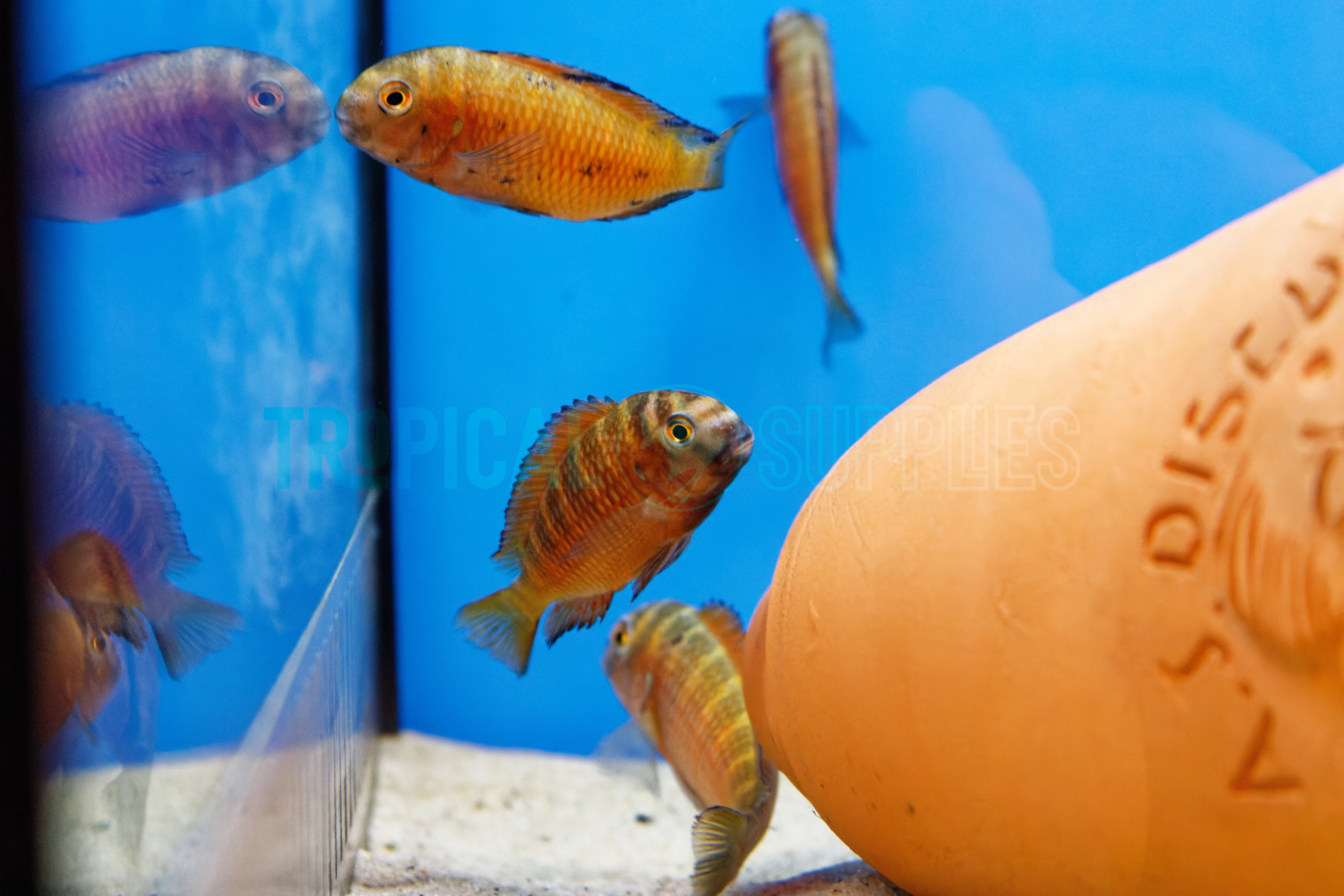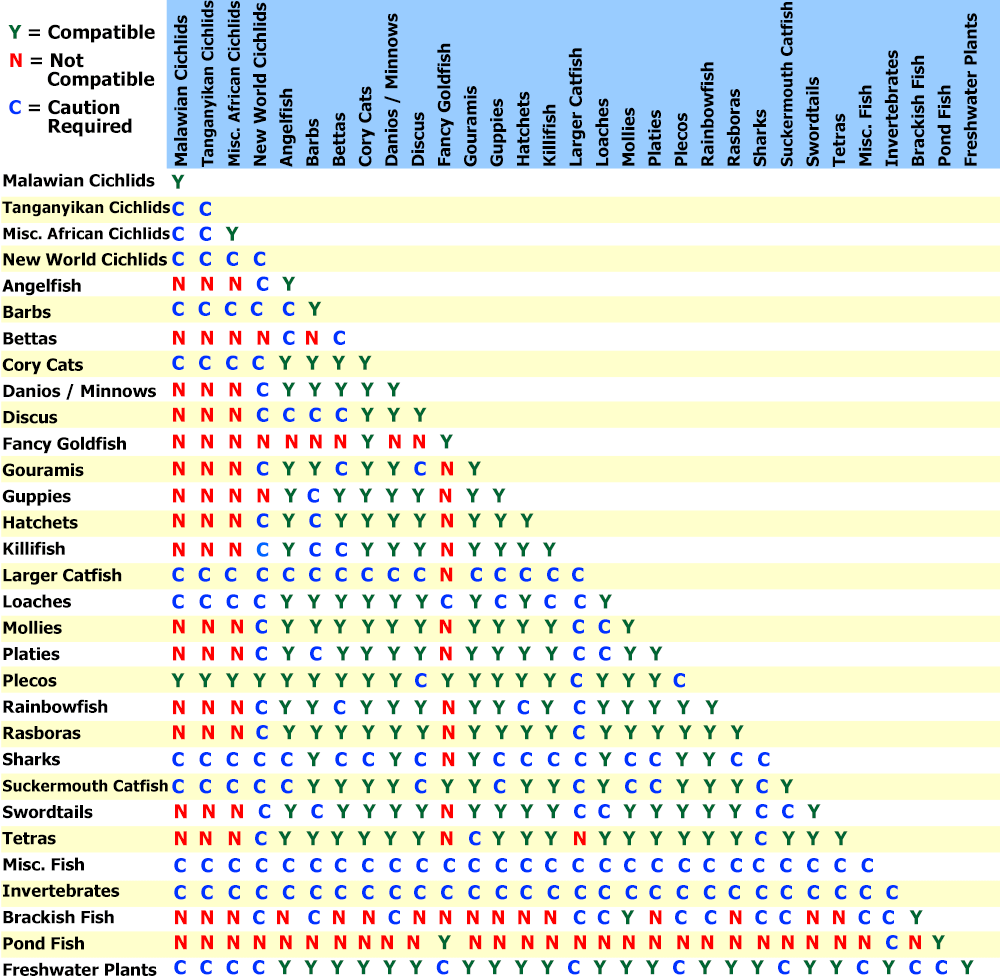Description
Tropheus Firecracker Cichlids – A Fiery Gem from Lake Tanganyika
Bring the vibrant spirit of African rift lakes right into your aquarium with the stunning Tropheus Firecracker Cichlids. These dazzling freshwater fish are renowned for their intense coloration—bright fiery reds and oranges blend beautifully with striking black markings, creating a breathtaking visual display that instantly captivates any fish enthusiast.
Native to the rocky shorelines of Lake Tanganyika, one of the oldest and deepest lakes in the world, Tropheus Firecracker Cichlids have evolved to thrive in complex, rock-filled habitats. This natural environment encourages their active and inquisitive behavior, making them one of the most engaging species to observe. Their energetic swimming patterns and social dynamics add a lively and dynamic element to any aquarium setting.
Key Features & Care Requirements:
-
Striking Appearance: Vibrant red and orange hues contrasted with bold black markings for a fiery, eye-catching look.
-
Natural Habitat: Originates from rocky shorelines of Lake Tanganyika, encouraging active swimming and territorial behavior.
-
Tank Size: Minimum 30 gallons recommended to provide ample space for swimming and territory establishment.
-
Water Parameters: Prefer stable, slightly alkaline water with a pH between 7.8 and 9.0, and temperatures ranging from 75°F to 82°F (24°C to 28°C).
-
Diet: Herbivorous diet; thrives on algae-based foods, vegetable matter, and high-quality cichlid pellets.
-
Behavior: Territorial and social, best kept in carefully planned groups with plenty of rock caves and crevices to minimize aggression.
-
Experience Level: Suitable for intermediate to advanced aquarists familiar with maintaining stable water conditions and managing cichlid behavior.
-
Tank Setup: Requires rocky environments with plenty of hiding spots to mimic natural habitat and promote healthy social interaction.
Whether you’re building a stunning Lake Tanganyika biotope or looking to add a bold splash of color and personality to your freshwater aquarium, Tropheus Firecracker Cichlids are a vibrant and hardy choice that will enhance your aquatic environment with energy and beauty.
Click & Collect
Livestock will only be bagged once you arrive, or if you contact us in advance to request it ready beforehand.
Local Delivery
Order anything from our in-store range and have it delivered right to you.
-
Minimum spend: £50
-
Delivery up to 10 miles: £10
-
Delivery up to 25 miles: £20
Distances are measured “as the crow flies”, not by road.
Once your order is placed, we’ll be in touch to arrange a suitable delivery date and time.
Please note, delivery may take a little longer as we often group orders together to build an efficient delivery run.
Important: If you’re ordering a large aquarium, please ensure someone is available to help unload the van on arrival.
Dry Goods Delivery
-
DX Express: 1 working day, same-day dispatch before noon 0-75kg
-
Express Pallet: 1–3 working days 75-500kg
If you'd like to add more items to an existing order that hasn't yet been dispatched, please place a Click & Collect order and leave a note asking us to combine the orders.
Please note: We currently only dispatch parcels Wednesday to Friday.
Pre-Order
Want the full details? Check out our Terms & Conditions.
Livestock Delivery
Thursday Delivery – £24
-
Dispatched Wednesday afternoon
-
Delivered Thursday before 1pm
-
Order by Wednesday 12 noon
-
Minimum spend: £50
Friday Delivery – £24
-
Dispatched Thursday afternoon
-
Delivered Friday before 1pm
-
Order by Thursday 12 noon
-
Minimum spend: £50
Saturday Delivery – £29
-
Dispatched Friday afternoon
-
Delivered Saturday before 1pm
-
Order by Friday 12 noon
-
Minimum spend: £50
📦 Want to Add to an Existing Order?
No problem! Just place a Click & Collect order and leave a note asking us to link it with your original one (as long as it hasn’t been dispatched yet).
🛒 Dry Goods Now Included!
You can now include dry goods in your livestock delivery – perfect for topping up supplies in one go.
❄️ Please note: We can’t send frozen food with livestock – please order frozen items separately.
⚠️ Delivery Exclusions
Unfortunately, we’re unable to deliver livestock to the following postcodes:
Scotland & Isles:
AB30–AB56, DD8–DD10, DG3–DG9, DG12–DG14, FK17–FK21, KA18–KA19, KA26–KA30, PA20–PA38, PA80, PH3–PH40
Cornwall Isles: TR21–TR25
All of the following postcodes are excluded:
BT, HS, IM, IV, JE, KW
Plus Channel Islands and Shetland Islands
Payment & Security
Your payment information is processed securely. We do not store credit card details nor have access to your credit card information.


